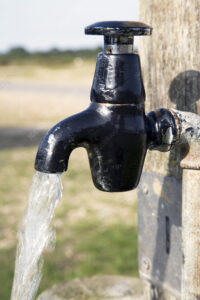When the discussion of water scarcity comes to the forefront, conversations often focus on the insufficiency of natural water resources. Climate activists and advocates highlight the depletion of natural water reserves, the impact of climate change, and rising levels of pollution. Online campaigns frequently criticise the actions of individuals, governments, and corporations whose activities threaten to turn the world into an uninhabitable place for both humans and wildlife. Much emphasis is placed on issues such as drought, deforestation, desertification, and the consequences of diminishing natural water resources.
However, the conversation around the economic scarcity of water exposes a wider gap in the climate space. Economic scarcity highlights disparities caused by access rather than availability. A child or university student in Ibadan, Nigeria, may lack clean water not because it does not exist, but because it cannot be accessed. At my own institution, infrastructural failures such as the absence of electricity and faulty plumbing meant that students were unable to obtain water. In many underdeveloped regions, impaired infrastructure, institutional failings, and social inequities are the true drivers of economic water scarcity.
My immediate resort was to depend on rainwater. Whenever I heard the first drops of a drizzle, I would hurriedly spread my buckets across the pavements, hoping that a few drops would eventually fill them. It was always a game of chance. Sometimes the rainfall was enough to fill the buckets, wash clothes, and clean the tiled floors. At other times, it amounted to little more than a sprinkle, insufficient to fill even a cup. Yet even then, rainwater could never fully replace clean water for cooking or drinking. If it had to serve that purpose, it meant spending extra money on gas to boil the water in order to kill germs.
During my research for this article, I discovered the term rainwater harvesting, which was essentially the practice we had been forced into adopting. Rainwater harvesting is the process of capturing, collecting, and storing rainfall for later use. The concept is simple: instead of allowing rainwater to run off, it is collected where it falls. In practice, rooftops or other catchment surfaces usually serve as the main points for collection.
Although this practice provided temporary relief, more effective and sustainable solutions require institutional responsibility. Administrators must ensure faulty plumbing systems are repaired and reliable electricity restored. Such measures would go much further in bridging the water divide that continues to disadvantage many communities, including institutions of learning.
At home, water had been abundant, so abundant that it felt weightless. At university, however, I came to understand its true weight. What I experienced was a glimpse of the reality faced daily by more than four billion people worldwide. Water, in truth, is never weightless, and impaired infrastructure, unstable political environments, and institutional failures cannot carry its burden.



